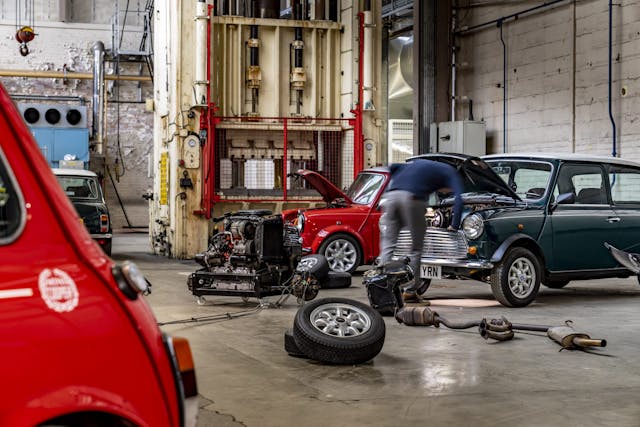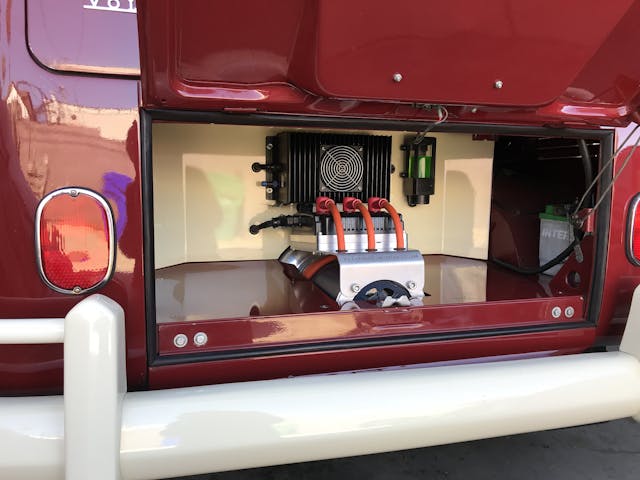California reintroduces bill to subsidize aftermarket electric conversions
California Senator Anthony Portantino (D-Burbank) has reintroduced some Specialty Equipment Market Association-sponsored legislation to create a financial rebate program for converting gas- and diesel-powered vehicles into zero-emissions vehicles (ZEVs). If enacted, SB 301 will offer Californians up to $2000 for converting their car or truck into a ZEV.
Currently, the state’s existing rebate programs serve only those purchasing new vehicles—none assist with ZEV conversions of gas-powered vehicles that started their life with an internal-combustion engine.
SEMA claims the government is “choosing winners and losers in the marketplace, including California’s 2035 ban on new gas- and diesel-powered cars and trucks.” The legislation, Portantino said, is designed to help working families in California obtain electric vehicles while assisting California in meeting its climate goals.
“It is essential that we continue to look for new methods and ideas to meet our strong climate goals,” said Portantino. “SB 301 will make it much easier for many Californians who have the desire to go green but lack the financial capacity to do so. It will aide conversion by providing a financial rebate for Californians who choose to convert their gas-powered car into an electric vehicle but can’t afford to do so. Cutting edge energy efficiency should not be reserved only for those wealthy enough to afford it.”

California has multiple programs, including the Clean Vehicle Rebate Program and the Clean Cars for All Program, to promote the purchase of new ZEVs. However, even with a financial rebate to purchase a new electric vehicle, ZEVs are unaffordable for many working-class Californians, with the cost of a new electric vehicle averaging at $66,000. ZEV conversions of gas-powered vehicles that started their life with an internal-combustion engine can be converted to a ZEV via an aftermarket package, alternatively, and can be converted for as little as $14,000, Portantino said.
Under the bill, The California Air Resources Board (CARB) would develop guidelines for the program, define eligible applicants, eligible replacement motors, parts, and conversion types. Income limits are in place to ensure that financial rebates are reserved for those who cannot afford to purchase a new electric vehicle. SB 301 will additionally benefit automotive workers and small automotive repair and ZEV conversion businesses. As a result, ZEV conversion businesses can expand, creating new, green jobs across California, Portantino said.

“The aftermarket is a leader in innovation, and that includes in zero-emissions technologies,” said SEMA President and CEO Mike Spagnola. “SB 301 creates opportunities for our California-based small businesses, their employees and consumers to build and have access to affordable zero-emissions vehicles.”
SEMA is sponsoring the legislation to “incentivize consumers to convert their vehicles to cleaner engines,” following a similar bill introduced last year that passed in the Assembly with zero opposition. The bill stalled in California’s upper house of legislature, the California Senate.
Check out the Hagerty Media homepage so you don’t miss a single story, or better yet, bookmark it.



Leave it to California. They want you to convert a vehicle to electric that will never be up to the new EV standards that already are still not fully developed.
Folks it is time we need to make a stand to preserve the older cars and to make sure we have the fuels and oils to run them.
Much of this is all miss leading info and even as it is the car we drive contribute insignificant amounts of emissions and even then most of our models are tuned to be as good or better than they left the factory.
The preservation of our collector cars is preservation of history and they need to be seen and remembered.
I challenge companies that supporting or hobby to take a stand to help preserve our models.
Preservation and collectability are all well and good, but there’s a point at which market/insurance values relegate the best specimens to spend their remaining days resting on display.
Restomods keep our favorite shapes on the road with modern levels of power AND emissions, and not every restomod needs a freshly-uncrated V8 for guilt-free roaming. Repowering mass-market classics (like the ‘bus in the photo, resplendent in orange peel[!]) may make for a much more usable urban runabout, which in turn improves our chances of seeing it in the wild.
Here’s a company challenge: Porsche should trickle down the Taycan powertrain into a form factor that slots into a 356/Speedster/550. Numbers-matching flat fours and gearboxes can bask on display while the old forms glide around under modern power.
Imagine a Taycan-hearted Gulf 917 at Goodwood!